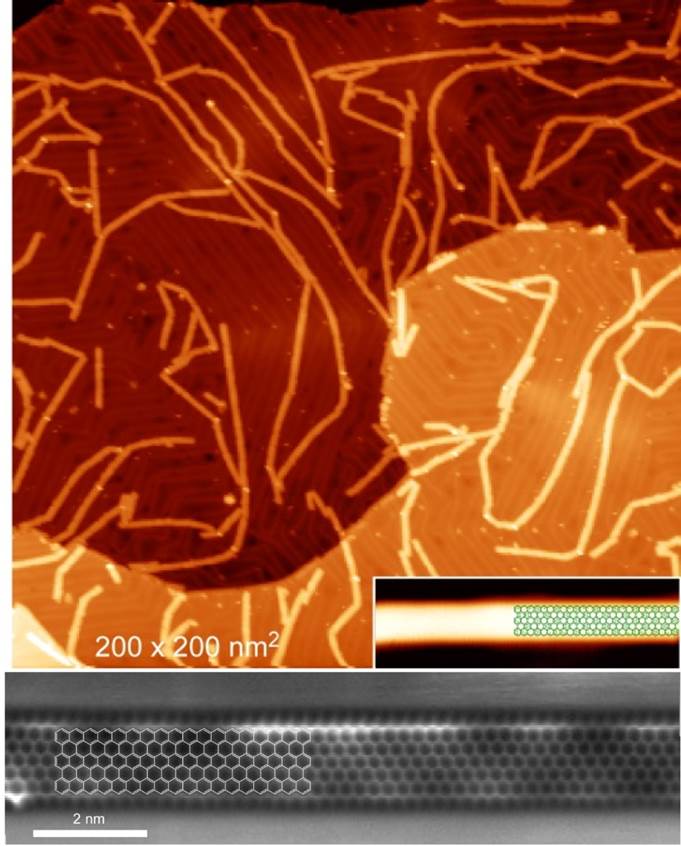At the Hamburg Science Award, scientists or research groups working in Germany are awarded prize money of €100,000 if they are nominated for their achievements.
This year's award ceremony on the topic of "Energy Efficiency" will take place in November 2017. Xinliang Feng from the Center for Advancing Electronics Dresden at the Technical University of Dresden and Klaus Müllen from the Max Planck Institute for Polymer Research in Mainz receive this year's coveted award for their research results in the field of graphene.

Image: Graphene nanoribbons, Image source: Research Group Professor Feng/EMPA Pictures
Graphene nanoribbons in structural perfection will soon form the basis for super-fast and energy-saving computers
Both have contributed to a better understanding of graphene with regard to the processing and synthesis of carbon materials with their basic knowledge of materials development. Due to its properties, graphene plays an important role in the development of more efficient batteries as well as flexible electronic components.
Graphene as an ITO substitute
But graphene is also considered the ultimate alternative to ITO (indium tin oxide) in the touchscreen sector. After all, graphene is one of the hardest and most resilient materials in the world. Graphene is a chemical relative of diamonds, coal or the graphite of pencil leads - only better. With only one atomic layer, it is one of the thinnest materials in the universe – less than a millionth of a millimeter thick and provides enormous economic potential for the future. For example, instead of the indium-based materials used today, graphene could revolutionize liquid crystal displays (LCDs) used in flat panel displays, monitors and many wearables such as cell phones or touch screens.
The research approach of the two scientists makes an important contribution to the development of resource-saving and efficient energy supply options.

